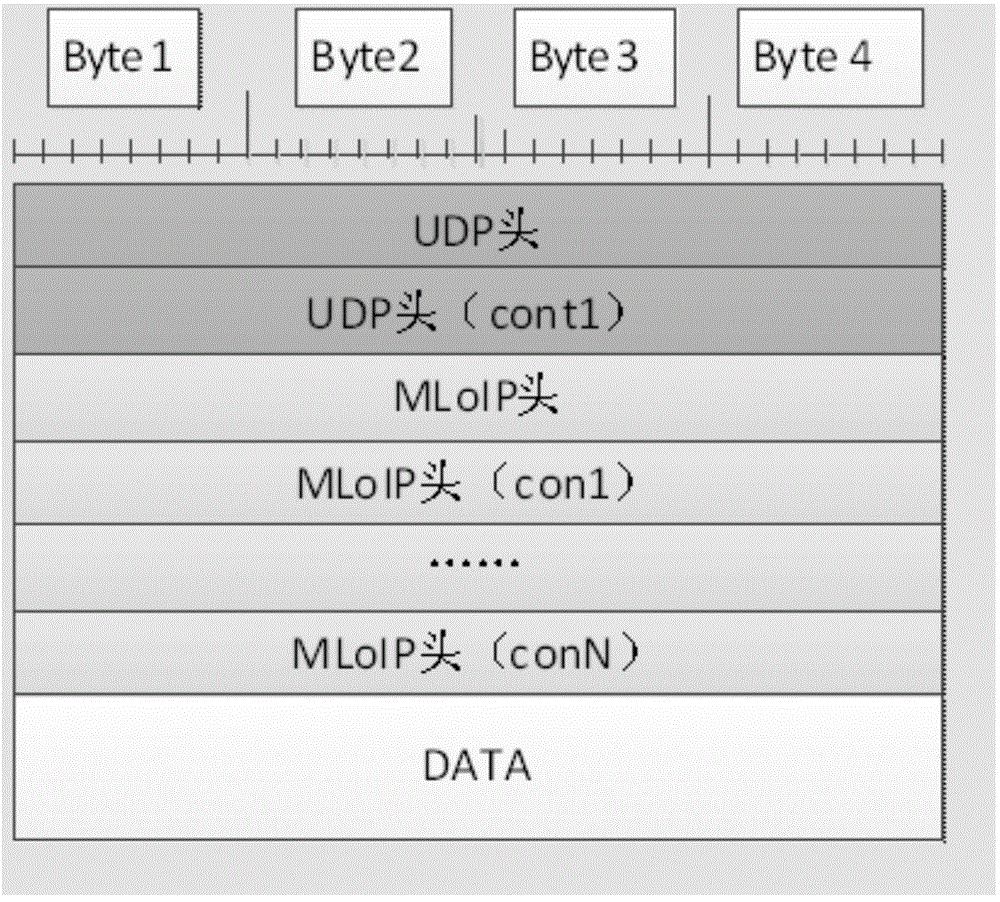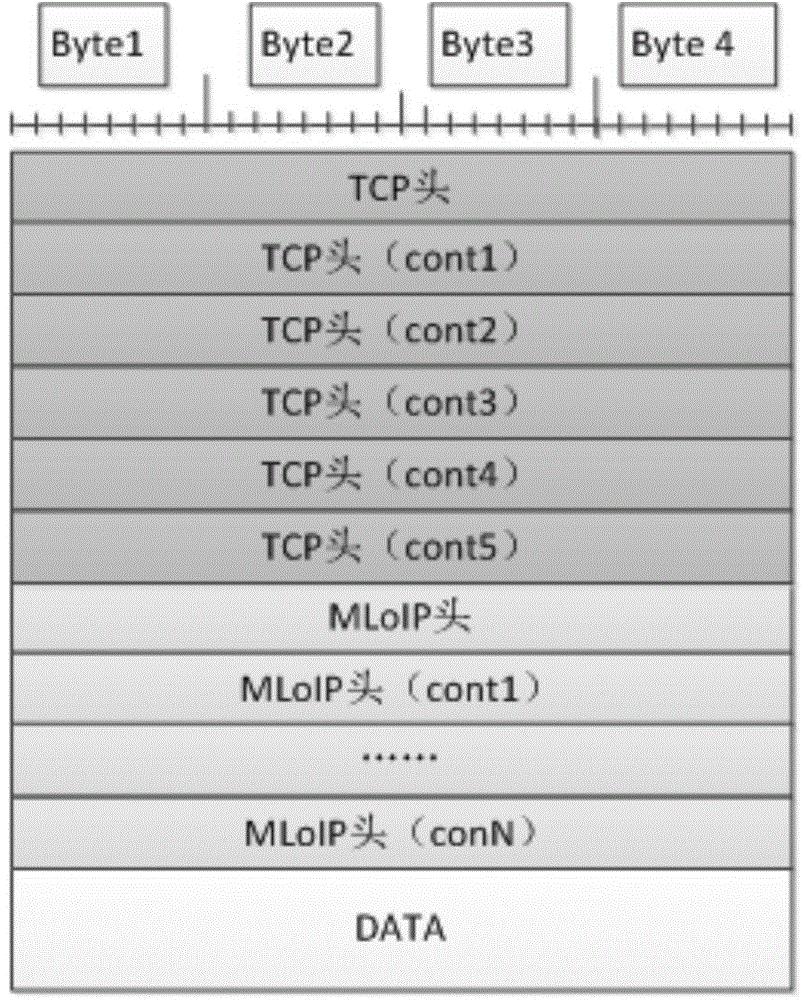Data transmitting and receiving method, device and data transmission system
A data sending method and data transmission channel technology, applied in transmission system, data exchange through path configuration, network traffic/resource management, etc., can solve the problem of inability to meet business data transmission requirements, limit business development, single camera data transmission issues such as limited capacity
- Summary
- Abstract
- Description
- Claims
- Application Information
AI Technical Summary
Problems solved by technology
Method used
Image
Examples
Embodiment 1
[0102] An embodiment of the present invention provides a method for end-to-end data transmission by binding multiple underlying data transmission channels (for example, but not limited to LTE (Long Time Evolution, long-term evolution) data cards, etc.), which utilizes multiple data transmission channels The ability of the channel to provide higher data transmission bandwidth to upper-layer applications. The basic principle is to split the original data IP stream into multiple sub-data streams at the data sending end, and encapsulate the original IP data packets into new IP data packets according to a custom protocol, and then transmit them through different underlying data transmission channels. The underlying data transmission channels are independent of each other during transmission; after receiving the data packets at the data receiving end, they are reordered according to the serial numbers of the data packets, and the original data is restored by removing the self-defined...
Embodiment 2
[0114] For the data sent by the data sending end, the data receiving end needs to maintain a receiving cache for each data sending end. For example, to avoid the data sending end occupying the buffer resources of the data receiving end for a long time, the data sending end can send data to the data receiving end through the registration / de-registration process. The client requests / releases cache resources. During specific implementation, the data sending end may send a registration request to the data receiving end when initially powered on or when there is data to be transmitted, requesting the data receiving end to allocate buffer resources for it. The data sending end sends a deregistration message to the data receiving end before standby / shutdown or after the data transmission is completed, and notifies the data receiving end to reclaim the buffer resources allocated to it.
[0115] It should be noted that the registration / de-registration process provided in Embodiment 2 c...
Embodiment 3
[0142] Since a plurality of data transmission channels are used to transmit data in parallel in the embodiment of the present invention, but the data transmission capabilities (such as bandwidth, transmission delay, etc.) of each data channel may be different, in order to ensure that the data packets arrive in order as much as possible, avoiding the rearrangement timer overtime To cause packet loss, the load balancing technology can be used to control the number of data packets allocated by the data sending end for each data transmission channel, allocate more data packets to data transmission channels with large bandwidth, and allocate less data packets to data transmission channels with small bandwidth.
[0143] The load balancing is mainly based on the data transmission quality information of each data transmission channel acquired by the data sending end, which may but not limited to include data transmission delay and channel quality information of the data transmission cha...
PUM
 Login to View More
Login to View More Abstract
Description
Claims
Application Information
 Login to View More
Login to View More - R&D
- Intellectual Property
- Life Sciences
- Materials
- Tech Scout
- Unparalleled Data Quality
- Higher Quality Content
- 60% Fewer Hallucinations
Browse by: Latest US Patents, China's latest patents, Technical Efficacy Thesaurus, Application Domain, Technology Topic, Popular Technical Reports.
© 2025 PatSnap. All rights reserved.Legal|Privacy policy|Modern Slavery Act Transparency Statement|Sitemap|About US| Contact US: help@patsnap.com



